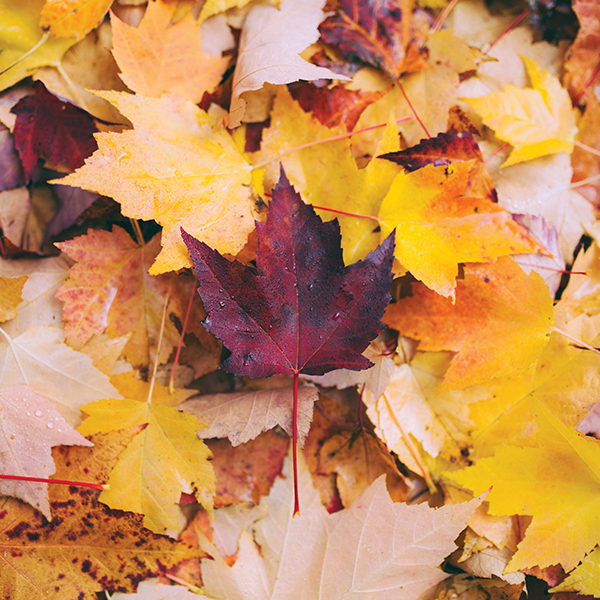Yards in the Mid-south have gone from green to brown as deciduous trees shed their leaves, covering the grass. This “brown gold” is a natural carbon source that improves lawns, gardens, and can protect tender plants over the winter. So grab your rake and collect this bountiful fall harvest.
Turning brown leaves into soil improving material is easy. It does take a bit of hand labor, but the effort will return multifold next spring. After leaves are gathered into piles the next step is most important: shred the leaves. Leaves can be hand raked into piles then shredded with a leaf shredder or a lawn mower. Or use your lawn mower to simultaneously shred and pile them. Shredding the leaves begins the breakdown process and keeps them from matting which can prevent water passing through. Once shredded, the leaves can be used in multiple ways.
Compost - Adding shredded leaves to new compost piles helps balance the nitrogen/carbon ratio. Green materials like grass, horse manure, and vegetable kitchen scraps are considered nitrogen sources. Adding leaves and other brown materials provides needed carbon to the compost pile. Leaves also add open structure space to the compost pile which aids in aeration. Just as water is the most essential element for horses, a healthy compost pile requires moisture. A dry pile won’t compost, but a wet pile will rot rather than decompose. Frequently turning the pile will speed the process, ensuring proper composting temperature is achieved. Getting a compost pile to the proper temperature not only benefits the microbes doing the decomposing but it also kills pathogens and weed seeds.
Mulch - Shredded leaves are a natural mulch for tender plants, flower beds, and gardens. Use six inches over fall garden plants to extend the harvest season. Annuals planted in the fall will also appreciate a winter blanket as they establish their roots. There are a few leaves to avoid in the garden as they inhibit plant growth. Leaves from walnut trees, eucalyptus, and camphor laurel should be thoroughly composted before using in garden or flower beds. Shredding is key as whole leaves will form a mat that prevents water penetration into the soil.
Soil - Shredded leaves can be tilled or forked directly into garden soil in the fall. Earthworms love leaves and will multiply this winter. Next spring you’ll be rewarded for your efforts when you find happy worms doing their job in your garden. Worms aerate the soil and leave castings (fecal matter) to enrich the soil. Since trees pull calcium, magnesium, and trace minerals out of the soil, leaves will add these minerals back. Fall is also a good time to add composted manure to your garden. Feeding your soil in the fall increases soil fertility for spring planting.
Leaf Mold - Leaf mold improves water retention, soil pH, and soil texture, While composting is a hot process driven by high temperatures and microbes, making leaf mold is a cold process accomplished with fungi over longer time. Moisture is still key so keep the pile moist, but not wet. Covering the pile will speed the process and yield usable leaf mold in about a year. Freshly fallen leaves have the ideal ratio of carbon to nitrogen so they will decompose more quickly. Adding fresh leaves to older ones will improve the process as older leaves have less nitrogen. Shredding the leaves also helps the fungi do their job.
Oak and holly have higher lignin (cellulose) content which takes longer to decompose, so include a variety of leaves for a better and quicker end product. Use leaf mold to a depth of 3 inches max and keep it away from plant root crowns to avoid plant rot. Add it directly to the garden to lighten soil texture, add nutrients, and retain water. The smell of healthy leaf mold will remind you of a walk in the deep woods.
In the Mid-south, late fall is the perfect time to prepare the garden for a restful winter and successful spring, so as you’re raking and shredding leaves, dream of the bounty your gardens will yield next year.









